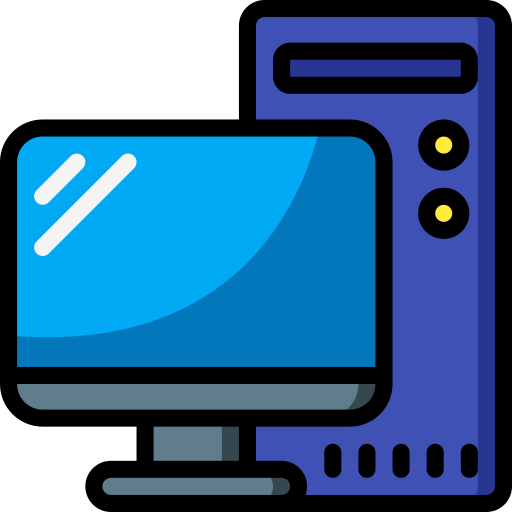

I hate meta as much as the next guy, but according to this they are the #3 organization in terms of kernel contributions, behind only Intel and Red Hat…


I hate meta as much as the next guy, but according to this they are the #3 organization in terms of kernel contributions, behind only Intel and Red Hat…


How does the 2016 slaying of Harambe affect the gorilla bdsm market, and specifically, what’s the impact on Go-spank’s value? Do I need to diversify before 2016, or do I double down?
Sorry for such a newb question.


Maybe not a service in the typical sense, but setting up your router+server to route your home network traffic through a VPN is a fun project.
My router (MikroTik) supports WireGuard, so I can use it with Mullvad for the whole house—but wg is demanding and it’s a slow router, so while it can NAT at ~1Gbps, it can’t do WireGuard at more than ~90Mbps. So, I set up WireGuard/Mullvad on a little SBC with a fast processor, and have my router use that instead. Using policy based routing and/or mangling, I can have different VLANs/subnets/individual hosts selectively routed through the VPN.
It’s a fun exercise, not sure I implemented it in a smart way, but it works :)


If you search around you might find free ones. Oracle has/had a free tier (though it’s Oracle, so…).


Yes, but you can run multiple VPS, from different providers, simultaneously.
What I like is that while it does depend on an external provider, it doesn’t depend on a specific external provider. Any VPS with a public IPv4 would work.


VPS+VPN, this is what I do.
VPS has public IP and runs WireGuard “server”* and a reverse proxy (and fail2ban…). Reverse proxy points to my home computer over the WireGuard link. No open ports on my home router.
For private facing/LAN-only services I just don’t have an entry in the VPS reverse proxy. DNS on the router points everything to my local server, so if at home I access everything directly. To access internal services remotely requires VPN (i.e., WireGuard to the VPS).
Works well; I have a tiny free tier VPS but even so, no complaints.
*Yes I know there are no wg clients or servers, only peers, but it plays a server-likr role.


I used Photoprism years ago, so my knowledge is probably pretty outdated.
My experience of Photoprism was that mobile was not tightly integrated. At the time I used Syncthing to sync photos — it worked ok for me, but I wasn’t going to set it up on my partner’s phone, for example.
Immich Just Works on both mobile and desktop. Multi user is great, sharing is great, and the local ML and face detection work remarkably well.
Whatever works for you is the best of course! Immich fits the bill for me, and it was very much worth it for me to “buy” it.


Regarding DNS servers, what router do you have? Some routers have simple enough DNS capabilities — I have a MikroTik, and have it set up with DNS entries for internal services (including wildcard). Publicly accessible services just use my registrar’s DNS (namecheap — no complaints).


Matter is also local—provisioning can be a PITA but once done I’ve been pretty happy with even the cheap Matter WiFi smart bulbs. Home Assistant supports them very well.
Cheap bulbs can be a little buggy, which usually means I need to power cycle some of them now and then.


My lights and motion sensors were obviously unaffected (HomeAssistant). My Emporia Vue2 power monitor would possibly have stopped working, except I flashed it with ESPHome firmware, so it’s local only, and of course it was fine. My security cameras (Frigate) were also fine.
If my smart home devices are going to stop working, it will almost certainly be my fault, thank you very much!


On low end CPUs you can max out the CPU before maxing out network—if you want to get fancy, you can use rsync over an unencrypted remote shell like rsh, but I would only do this if the computers were directly connected to each other by one Ethernet cable.


If you’re running it via docker compose it’s trivial to upgrade, and there are no breaking changes. Pull, down, up, you’re done.


Frigate is pretty good, too. I’ve only been running it for a few months but I’m very happy with it.
Though, technically that leaves you more at risk of ransomeware or something that overwrites your data.
I rsync as well, but use snapshotting on the remote drives. So, a bad rsync would suck but shouldn’t really result in data loss. Ransomware on my local+remote server would of course be very bad…
I do something similar — I have a raspberry pi and a HD, with daily rsync and snapshots (monthly retained indefinitely, weekly retained for a month, daily retained for a week). It’s at family’s house, connected to my home via WireGuard via a VPS. Tailscale (or anything really) would also work here.
It’s a great setup! Just have some watchdog reboot if it can’t talk to home (a simple cronjob with ping -c1 home.lan || reboot or similar).
Even our “slow” 35Mbps upload speed is way more than enough for incremental rsyncs of my Immich library. The initial sync was done in person, though.
I got one from goHardDrive on eBay (link). It was cheap enough, looks flawless, and knock on wood has been working fine.
Googling around, the brand gets…mixed reviews. My use case is such that of this drive fails it’s not a big deal.


I’ve honestly never understood people who feel the need to “replace” Spotify. … Spotify has never made sense for my use-case.
I don’t know how to say this, but…you have extremely uncommon use-cases:
…during those times, my phone is either fully turned off (so I’ll use an MP3 player), or it’s in Airplane Mode.
Many people listen to music on stereos and don’t necessarily want a device plugged in, so
I just download the music I like to my device and listen to it via VLC.
either doesn’t work or is substantially less convenient than e.g. casting from a phone.
Not hating on your setup at all, but it’s very niche, in my experience.


ZigBee router thing:
I’ve been happy with the SMLIGHT SLZB-06M. You can easily flash firmware, and it has PoE which was important for me. I believe it also supports Thread, but I haven’t tried this yet (and I’m not sure if it supports it at the same time as Zigbee).
Zigbee smart plugs from Third Reality have been pretty solid in my experience, and they report power usage.
For circuit breaker level monitoring, I have an Emporia Vue2. I have it running esphome, completely local — unfortunately this requires some simple soldering and flashing, so it’s not turnkey. But it’s been rock solid ever since flashing it. (Process is well documented online.)
I’ve had decent luck with cheap wifi Matter bulbs, but provisioning them is finicky, and sometimes they just crap out and need to be power cycled; Zigbee bulbs (e.g., Ikea) have generally been reliable, though sometimes I’ve had difficulty pairing them initially. After power cycling a Matter WiFi bulb, it takes a while for it to respond to Home Assistant; Zigbee bulbs generally respond as soon as you power them on.
I have a wired smart light switch from TP-Link/Kasa (KS205), and it’s been completely hassle free (and totally local — Matter over wifi). The Kasa smart switch dongles I have work flawlessly but need proprietary pairing, and I’m afraid to update firmware in case they lose local support.
Good luck! Fun adventure :)


I think a lot of companies view their free plan as recruiting/advertising — if you use TailScale personally and have a great experience then you’ll bring in business by advocating for it at work.
Of course it could go either way, and I don’t rely on TailScale (it’s my “backup” VPN to my home network)… we’ll see, I guess.
It’s
turtlesnext guys all the way down I guess.